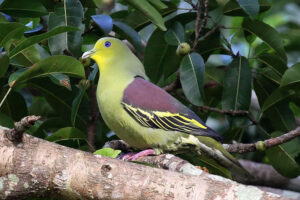Madhu Road National Park is A Gem in Sri Lanka’s Wilderness
Where is Madhu Road National Park?
Madhu Road National Park is located in northern Sri Lanka, roughly 25 kilometers (16 miles) east of Mannar. Madhu Road is home to a wide variety of birds. Alexandrine parakeet, ashy-crowned sparrow-lark, ashy prinia, ashy wood swallow, Asian koel, Asian palm swift, baya weaver, black drongo, black-hooded oriole, black-rumped flame back, and black-winged kite are among them.
On June 28, 1968, the Madhu Road area was classified as a sanctuary under the 1937 Fauna and Flora Protection Ordinance. The sanctuary covered a total area of 26,677 ha (65,920 acres). Following the end of the civil war in Sri Lanka, the government announced plans to turn several sanctuaries in the Northern Province into national parks. The government subjected the refuge to unlawful sand extraction, tree removal, and uncontrolled expansion
An Integrated Strategic Environmental Assessment of Northern Province, published in October 2014 by the government with assistance from the United Nations Development Programme and the United Nations Environment Programme, recommended that the Madhu Road sanctuary, excluding developed areas, and the surrounding state-owned forests be designated as a national park. As a result of absorbing surrounding state-owned forests, the sanctuary’s area would rise from 26,677 ha (65,920 acres) to 63,067 ha (155,843 acres) under the recommendation.
Madhu Road, together with Adam’s Bridge, Chundikkulam, and Delft, was named national parks by the government in May 2015. Madhu Road Sanctuary was designated a national park on June 22, 2015, with an extent of 63,067 ha (155,843 acres)
Best Time to Visit Madhu Road National Park
May to early September during the drought, when animals are drawn out to their waterholes.
Wildlife You Might See at Madhu Road National Park
Wild Species knowledge is quite sparse and therefore represents a significant opportunity for any future researcher to investigate the area and conduct ecological research in order to determine the presence of wild species in the area. If anyone is interested, please share your findings with us so that we may incorporate them into this page in order to educate our future generation.
- Birds
- Mammals
- Reptiles
- Fish
Physical Features of Madhu Road National Park
The total yearly precipitation is approximately 1,230 mm. May is the warmest month, with an average high temperature of 32°C. January is the coldest month, with an average high temperature of 28°C and a low temperature of 22°C.
Fauna & Flora of Madhu Road National Park
Madhu road is home to a wide variety of birds, including the alexandrine parakeet, the ashy-crowned sparrow-lark, the ashy prinia, and the ashy wood swallow. Asian palm swift, baya weaver, black drongo, black-hooded oriole, black-rumped flameback, black-winged kite, blue-faced malkoha, brahminy kite, brown-headed barbet, changeable hawk-eagle, common emerald dove, common iora, common myna, common tailorbird, common woodshrike, coppersmith barbet, crested honey buzzard, cri green imperial pigeon, asian green bee-eater, grey-breasted prinia, house crow, house sparrow, indian paradise flycatcher, indian peafowl, indian robin, indian roller, jerdon’s bush lark, jerdon’s leafbird, jungle crow, jungle prinia, large cuckooshrike, malabar pied hornbill, orange-breasted green pigeon, oriental magpie, Green pigeon, purple sunbird, red-rumped swallow, red-vented bulbul, red-wattled lapwing, rock dove, rose-ringed parakeet, scaly-breasted munia, shikra, small minivet, spotted dove, spotted dove, spotted dove, spotted dove, spotted dove, spotted dove, spotted dove, spotted dove, spotted dove, spotted do Sri Lankan junglefowl, tawny-bellied babbler, white-bellied sea eagle, white-browed bulbul, white-browed fantail, white-rumped munia, white-rumped shama, yellow-billed babbler, yellow-eyed babbler, and Zitting cisticola Asian elephant, bear, chevrotain, chital, golden jackal, grey langur, grizzled giant squirrel, Indian grey mongoose, Indian hare, Indian palm squirrel, leopard, muntjac, purple-faced langur, ruddy mongoose, toque macaque, water buffalo, and wild boar are among the mammals found in the park.
Summary of Madhu Road National Park
Location and Overview
- Located in the Northern Province of Sri Lanka
- Spans over 6,900 hectares
- Declared a national park in 2015
Biodiversity
- Home to a variety of animals, including leopards, elephants, spotted deer, sambars, and sloth bears
- Over 100 species of birds, including endemic and migratory species
Landscape and Attractions
- Rolling hills, dense forests, and sparkling waterfalls
- Kandawai Waterfall, which cascades down from a height of 200 feet
- Several trekking trails are available for those who want to explore on foot
Visitor Information
- Guided safaris available
- Strict rules and regulations in place to ensure the preservation of natural beauty
- Visitors must follow guidelines, including staying on designated trails and not disturbing wildlife.
Conclusion
In conclusion, Madhu Road National Park in Sri Lanka offers a unique opportunity for nature enthusiasts to witness the biodiversity and scenic beauty of the region. With its rich variety of flora and fauna, including several endangered species, visitors can enjoy an unforgettable experience exploring the park’s lush landscapes and tranquil surroundings. The park’s location also offers convenient access to nearby attractions, making it an excellent addition to any Sri Lanka itinerary. Overall, Madhu Road National Park is a must-visit destination for anyone seeking a true nature adventure in Sri Lanka.












One thought on “Madhu Road National Park – Sri Lanka”
Wow that was unusual. I just wrote an very long comment but after I clicked submit my comment didn’t appear. Grrrr… well I’m not writing all that over again. Anyway, just wanted to say wonderful blog!